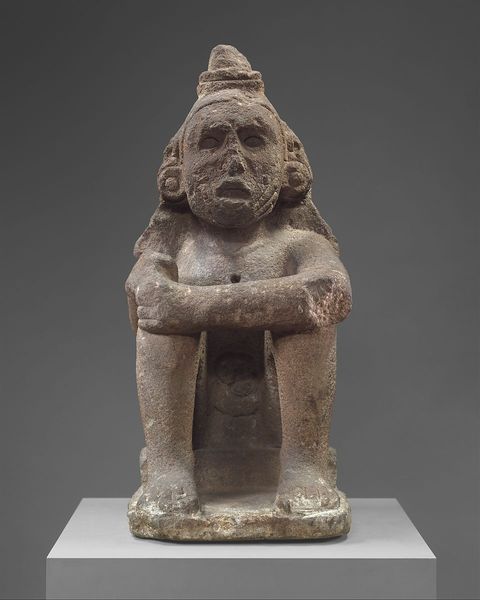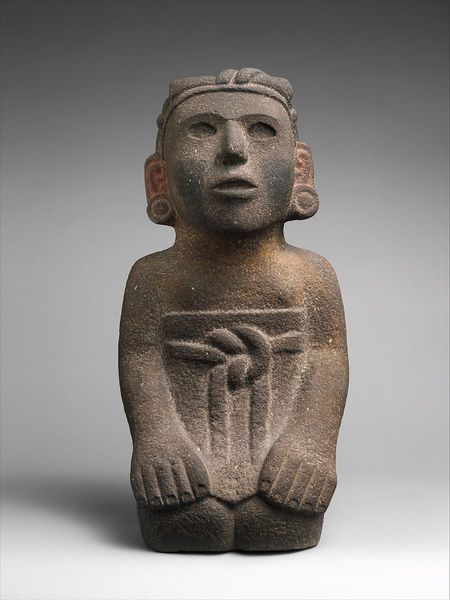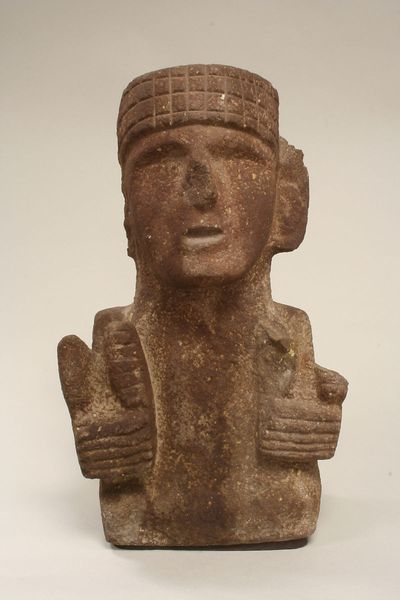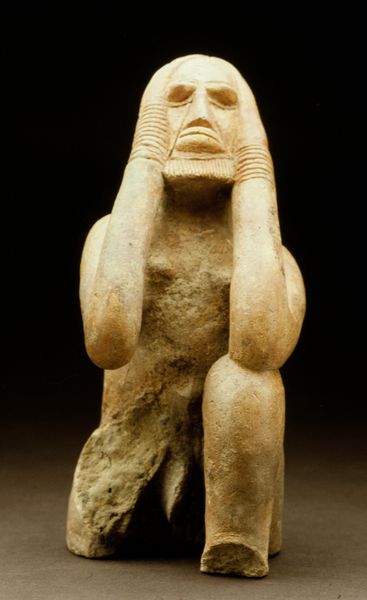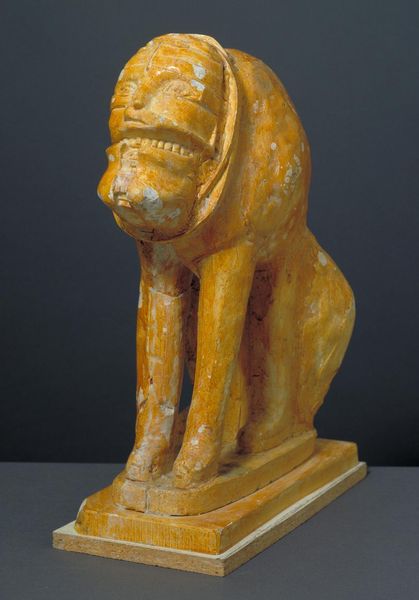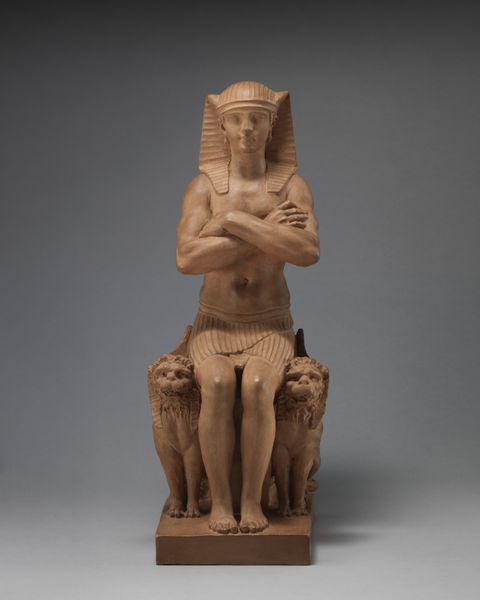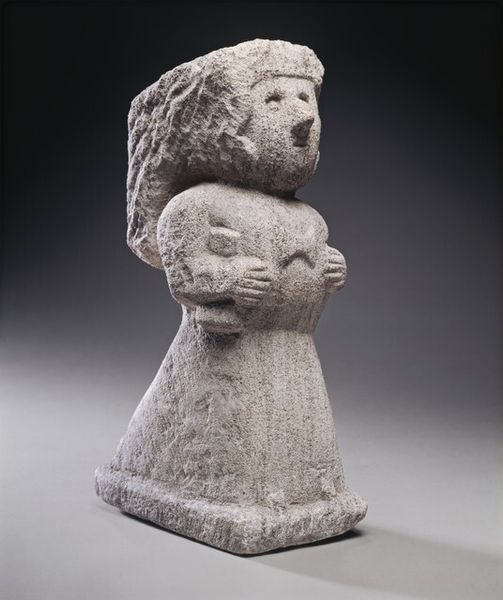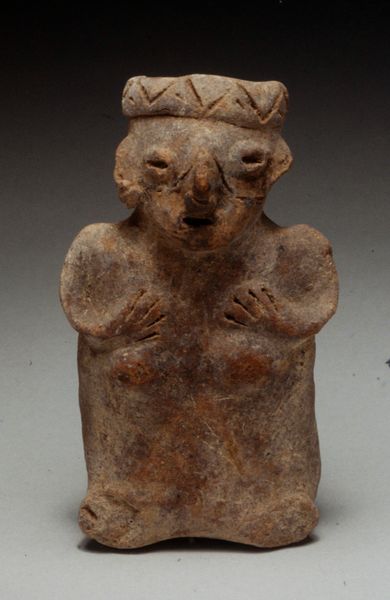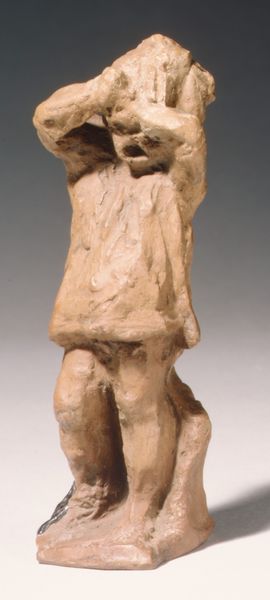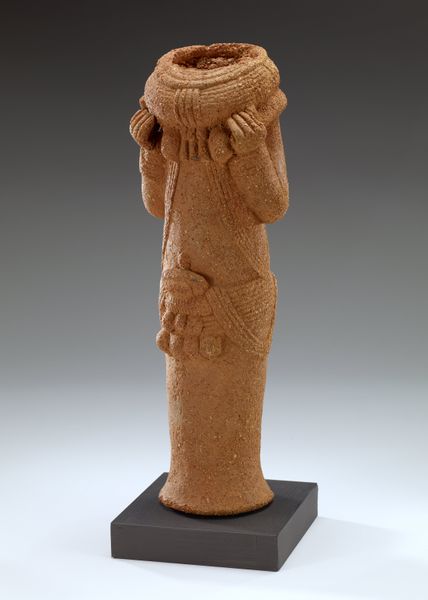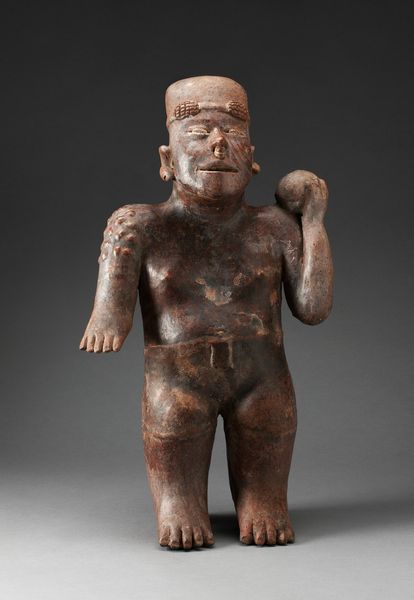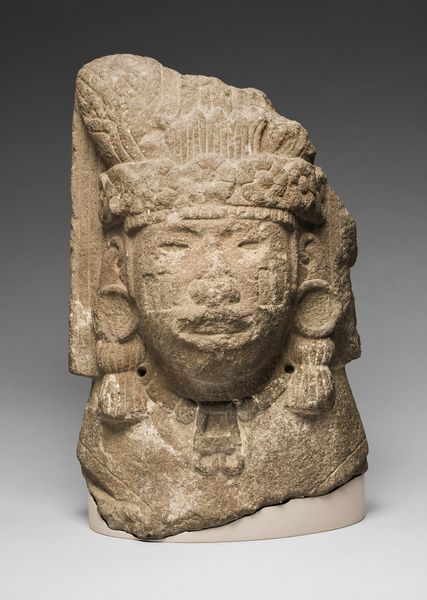
carving, sculpture
#
portrait
#
3d sculpting
#
3d model
#
carving
#
3d character model
#
sculptural image
#
figuration
#
unrealistic statue
#
3d shape
#
sculpting
#
ancient-mediterranean
#
sculpture
#
3d character modeling
#
forehead
Copyright: Public domain
Curator: This sandstone sculpture, "Standard Bearer," dates back to 1521 and is currently housed at the Metropolitan Museum of Art. It offers a compelling snapshot of Aztec artistry at the dawn of European contact. Editor: I’m immediately struck by its stoicism. The figure's rigid posture and direct gaze convey a powerful sense of presence and perhaps even defiance. The symmetry, even the somewhat crude carving of details like the lion-like figures, emphasizes a certain symbolic order. Curator: Absolutely. Beyond its immediate visual impact, it's crucial to situate this piece within the broader context of the Spanish conquest. The "Standard Bearer" likely embodies the shifting power dynamics and ideological conflicts of that era. We must examine how indigenous artists negotiated their identities and traditions in the face of colonization. Editor: I’m curious about the imagery worked into the sculpture. Note the distinct carving at the lower portion of the figure. I wonder, were such choices primarily stylistic, or did they embody codified Aztec beliefs regarding hierarchy, power, or even specific deities at the time of contact? I would wager they are heavily informed by social structure. Curator: Precisely! And that consideration aligns perfectly with the growing scholarship around Aztec art and performance during the early colonial period. How the role and depiction of indigenous leadership was undergoing transformation due to, and in response to, emerging cultural values of their conquerors. Editor: To me, the visible damage to the figure’s face only adds to the emotional depth. It highlights the toll of time and historical upheaval. Curator: A potent symbol of enduring indigenous resistance against erasure. Examining how it survives as both art object and socio-historical artifact deepens our understanding of art history's role in colonial and postcolonial narratives. Editor: It gives us pause to consider cultural memory and continuity. Curator: And a sobering glimpse into power, identity, and artistic resilience.
Comments
No comments
Be the first to comment and join the conversation on the ultimate creative platform.
